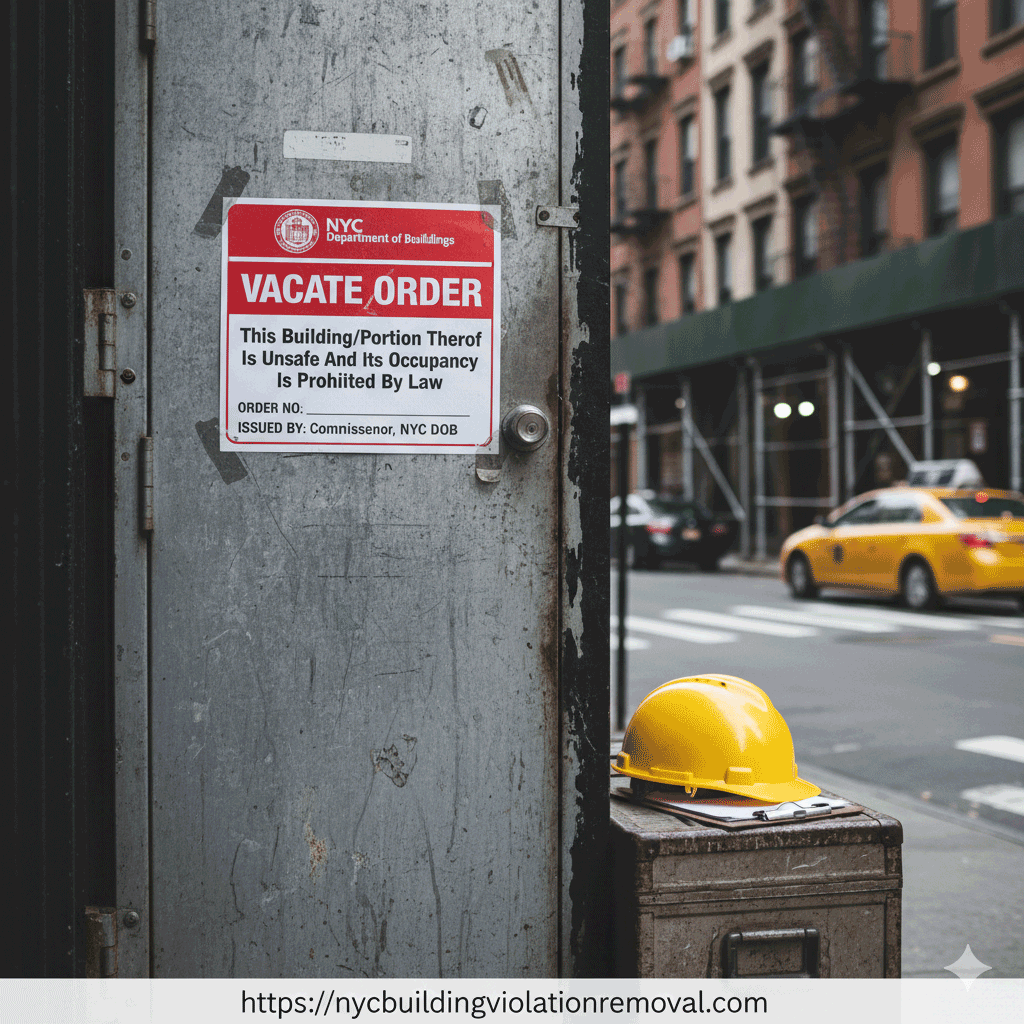Understanding Vacate Orders — A Practical Guide for Owners & Tenants
A Vacate Order is an official directive—commonly issued by the New York City Department of Buildings (DOB)—that requires occupants to leave part or all of a building immediately because of conditions that pose imminent danger to life, health, or property. Vacate Orders are legally enforceable and must be addressed quickly.
When Does the City Issue a Vacate Order?
- Severe structural damage or risk of collapse
- Blocked or compromised means of egress (stairwells, fire escapes)
- Fire-safety failures (sprinklers, alarms, fire separations)
- Illegal/unpermitted conversions or hazardous conditions
- Other imminent threats to occupants or the public
Legal Consequences & Enforcement
Vacate Orders are backed by significant enforcement powers. Failure to comply can result in civil penalties, criminal charges for tampering with a seal, and additional enforcement actions such as injunctions or fines. Property owners who ignore vacate orders risk higher fines and possible criminal exposure if harm occurs.
What to Expect If Your Property Is Vacated
- Immediate loss of occupancy and rental income for affected areas.
- Restricted access to the premises — retrieving belongings typically requires DOB permission.
- Requirement to perform repairs, obtain permits, and pass DOB inspections before re-occupancy.
- Potential relocation assistance requirements and liens in some cases.
How to Lift a Vacate Order — Step-by-Step
- Assess the problem: Hire a qualified structural engineer or architect to identify hazardous conditions.
- Create a remediation plan: Prepare drawings, scopes of work, and permit applications if required.
- Perform repairs: Use licensed contractors to correct the violations according to DOB standards.
- Submit documentation: Provide affidavits, permits, and proof of correction to DOB.
- Request re-inspection: Schedule DOB inspections; once satisfied, DOB will rescind the vacate order.
Preventing Vacate Orders — Best Practices
- Regular inspections (structural, façade, fire-safety)
- Always pull permits and do permitted work with licensed professionals
- Respond promptly to DOB violations and warnings
- Implement proactive maintenance plans for older buildings
Why Hire an Expert?
Navigating DOB requirements can be complicated and time-sensitive. We coordinate engineers, contractors, and DOB communications, prepare documentation, and manage inspections — speeding the path to rescission while ensuring safety and full compliance.
Frequently Asked Questions
Can I stay in part of the building if a partial vacate is posted?
Only the areas explicitly allowed by the DOB are safe to occupy. If DOB posts a partial vacate you must obey the posted notice and any DOB instructions.
How long until a vacate order is lifted?
The timeline varies with the severity of the violations — from a few weeks for minor repairs to several months for major structural remediation.
What if my tenants need housing immediately?
Tenants displaced by a vacate order may be eligible for emergency housing assistance; owners should document communications and keep DOB records up to date.
Need help lifting a Vacate Order? Our team at NYC Building Violation Removal specializes in diagnosing violations, preparing corrective scopes, pulling permits, and coordinating inspections to get your building back in service safely and quickly.
Contact us: nycviolationremovalinc@gmail.com | 347-828-1917
